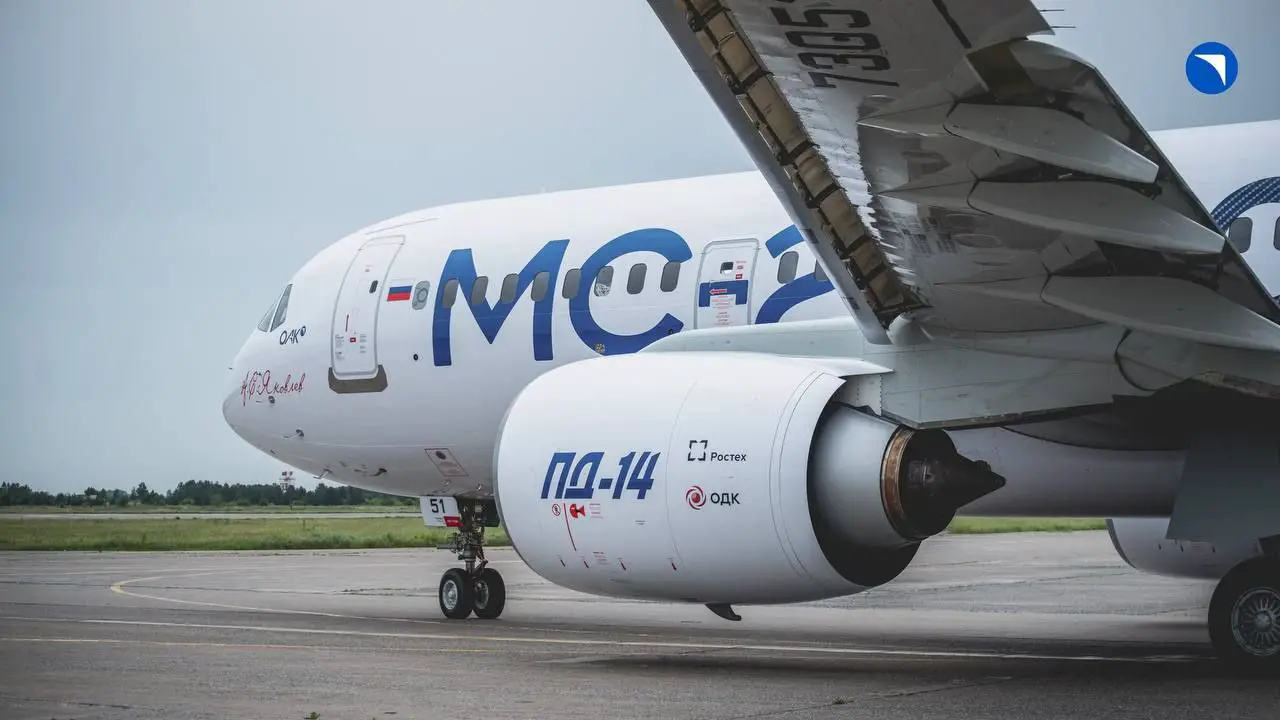Recently, the Russian Ministry of Industry and Trade stated it would allocate 14.2 billion rubles for research and development work aimed at improving the PD-14 engine, which will power the MC-21 aircraft. Will this affect the serial production and deliveries of the newest passenger airliners planned for 2026? As per the aviation expert and executive director of the AviaPort agency, Oleg Panteleev, the PD-14 project for the aviation industry was initially decided to develop a basic gas generator that could be used to create various thrust modifications.
The PD-14 project is not just an engine for the in-demand MC-21 aircraft. It represents a set of critical technologies, the most modern production facilities, and the revival of expertise in creating advanced aircraft engines, he stressed.
The combination of two factors—its highly demanded size category and great potential for modifications—makes the PD-14 the main aircraft engine for Russia’s civil aviation. Speaking to IRCity, he said the PD-14 engine was certified as far back as 2018.
“The safety of its standard design has been confirmed by Russia’s aviation authorities, and it is approved for commercial use. Thus, the current work on the PD-14 does not directly affect the certification timeline for the MC-21-310 aircraft,” he explained.
According to him, design refinements for aircraft or engines can continue for a long time, which is a completely normal process. Panteleev explained that the life cycle of modern, technically complex products spans decades, during which new technologies and materials may emerge and be implemented. Moreover, software is refined over time, and defects or breakdowns may occur that need to be addressed.
However, Panteleev pointed out another aspect—creating a new generation of engines is an extremely expensive endeavor. The cost is also affected by the development duration.
“The longer the time between the start of spending and the return on investment from selling the new engines and providing maintenance and repair services, the more the project becomes expensive due to the cost of borrowed funds and the need to implement new solutions stemming from stricter certification requirements,” the expert explained.
Therefore, Panteleev clarified, the first commercial deliveries of both aircraft and engines worldwide often come with some limitations.
“For example, an engine is designed to operate across a wide range of ambient temperatures, in high-altitude airports, and in heavy rain conditions. To confirm performance, the engine must be tested in all of these extreme conditions, which is time-consuming and costly. But if you’ve tested the engine at +40°C to -45°C, you can supply it to airlines operating in central Russia, where this range is likely sufficient. Only later, to expand the market to northern regions and Central Asia, will you conduct additional tests and confirm new capabilities,” he told IrCity.
Speaking specifically about the PD-14, Panteleev mentioned noise suppression systems.
“The global aviation community has noise level requirements, including current and future standards. It’s possible to comply with today’s regulations, but once new standards come into effect, flying to certain countries may no longer be allowed. Aircraft developers can create an engine that meets current standards and then, by adding more effective noise suppression devices, bring the product up to future standards. The use of advanced composite materials can also reduce the engine’s weight,” he clarified.
“You have to confirm performance characteristics step by step. And while the initial time between overhauls or replacement of hot section parts might be short, a couple of years later, these figures can improve significantly. As a result, the engine’s operating costs will decrease, making it more attractive to customers,” he explained.
Panteleev also compared the technical characteristics of the PD-14 to the Pratt & Whitney engine originally intended for the MC-21. According to the expert, in terms of specific fuel consumption, the PD-14 was expected to lag behind by 2–3%, but in terms of maintenance complexity and total operational cost, the Russian engine was supposed to have an advantage. But there’s a caveat:
“Only the start of commercial flights can confirm these promises by the developers,” Panteleev noted.
Overall, considering the issues with Pratt & Whitney engines faced by airlines worldwide, Russian developers, according to Panteleev, practically “crossed themselves” when they realized how much trouble the U.S. sanctions had actually spared them.
He referred to the issues with American Pratt & Whitney engines, specifically the summer 2023 recall of over a third of their power plants (more than 1,000 units), which disrupted flights globally. The problem was linked to microscopic contaminants in the metal used to make turbine disks. This contaminated powdered metal could interfere with engine performance.
The MC-21 is a new-generation, medium-range passenger aircraft with a capacity of up to 211 passengers. The airliner is assembled at the Irkutsk Aviation Plant. Its first flight took place on May 28, 2017, and on December 15, 2020, it made its first flight using the Russian PD-14 engine.
Initially, it was planned that the first six serial MC-21 airliners with the PD-14 engine would be delivered to customers in 2024, and that serial production would begin the same year. However, Deputy Prime Minister Yury Borisov stated that the aircraft’s production would be delayed by 1–2 years due to Western sanctions.
In early January 2025, a Unified Plan for achieving national goals by 2030 was published, showing a 1.5x reduction in import substitution volumes. According to this document, nine aircraft were planned to be delivered to airlines in 2025, and 31 aircraft in 2026. By 2029, annual production should reach 72 MC-21 aircraft.
It is now known that certification flights for import-substituted aircraft will begin in spring–summer 2025, and the first deliveries to airlines will take place in 2026.
So far, the majority of MC-21 customers are Russian companies. However, preliminary agreements have also been reached with foreign carriers, including Air Tanzania, Cairo Aviation (Egypt), Azerbaijan Airlines, and Peruvian Airlines (Peru). Additionally, the Belarusian airline Belavia has expressed interest in purchasing the Irkutsk airliners.
Official Website of Youtube Channel – Altitude Addicts
